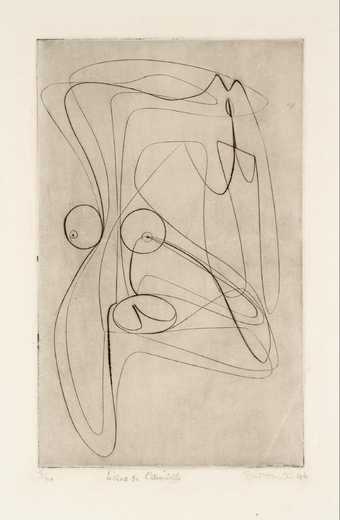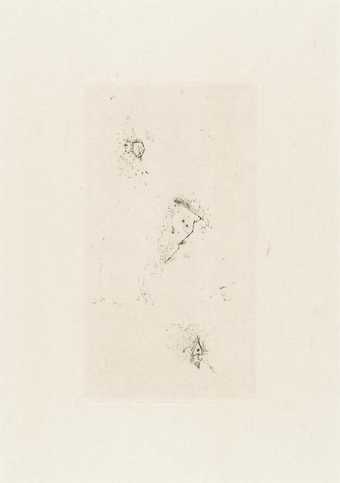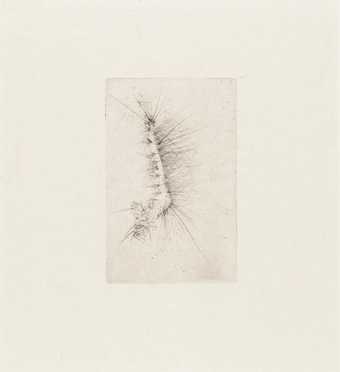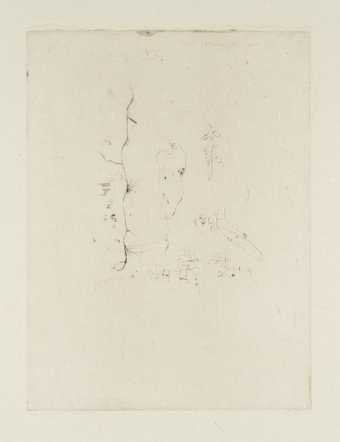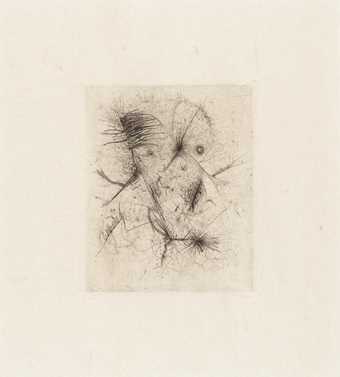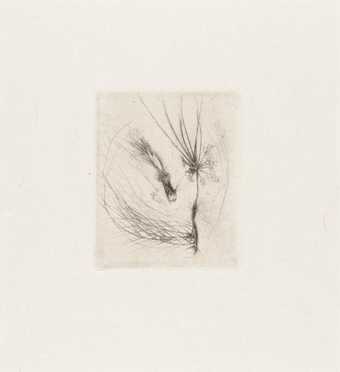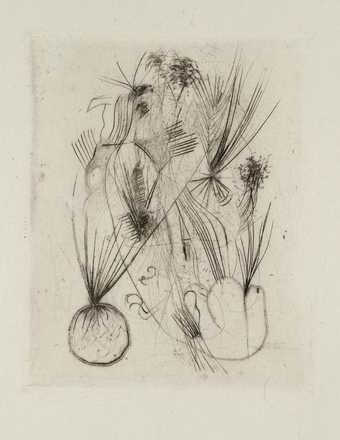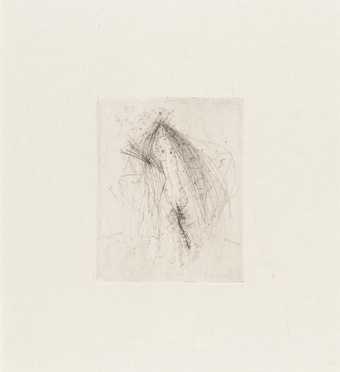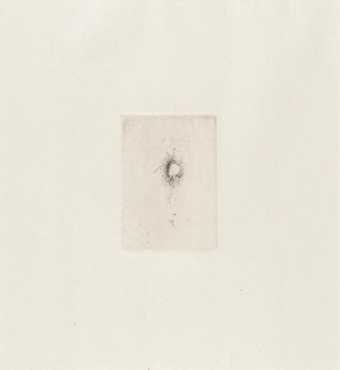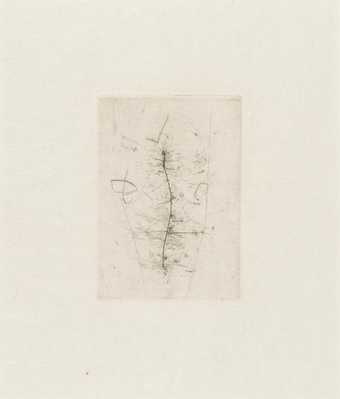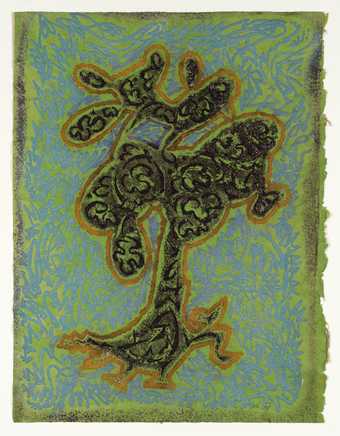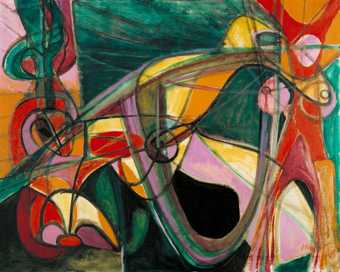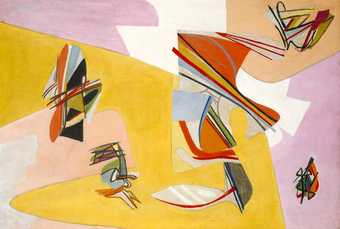
Not on display
- Artist
- Stanley William Hayter 1901–1988
- Medium
- Engraving, aquatint and etching on copper
- Dimensions
- Image: 251 × 200 mm
- Collection
- Tate
- Acquisition
- Purchased 1972
- Reference
- P07027
Display caption
Hayter's interest in the combination of chance and spontaneous creativity is conveyed in the titles of these two works: Hunt the Needle and Myth of Creation. An element of controlled design is also evident, particularly in Hunt the Needle where a woman's anatomical features clearly emerge from the tangled lines. The prints demonstrate the technical refinement that made Hayter one of the century's most innovative printmakers. His Paris workshop, Atelier 17, was a focus for Surrealist experimentation, and American artists drew upon his expertise when he established a workshop in New York in the 1940s.
Gallery label, August 2004
Does this text contain inaccurate information or language that you feel we should improve or change? We would like to hear from you.
Catalogue entry
Stanley William Hayter 1910-1988
P07027 Myth of Creation 1940
Inscribed ‘Etat’ b.l., ‘Myth of Creation’ b.c. and ‘S. W. Hayter 40’ b.r.
Engraving, aquatint and soft ground etching on copper, 10 x 8 (25.4 x 20.3).
Purchased from Christopher Drake Ltd (Grant-in-Aid) 1973.
Coll: The artist’s collection; Christopher Drake Ltd.
Exh: Christopher Drake Ltd, October-November 1973 (4, repr.).
Lit: Graham Reynolds, The Engravings of S. W. Hayter, 1967, p.6, repr. pl.8.
The artist explained that this work . . . ‘features heads, an elongated figure, a phallus and refers to creation in general—the division of the waters and the sky.’ (letter to the compiler 24 May 1974).
In work of this date Hayter dealt frequently with the theme of creation, at the same time investigating sources of energy through the use of line. This print is an early demonstration of his practice of combining different printing methods—in this case engraving, aquatint and soft-ground etching processes.
Published in The Tate Gallery Report 1972–1974, London 1975.
Explore
- abstraction(8,615)
-
- non-representational(6,161)
-
- gestural(891)
- irregular forms(2,007)
- formal qualities(12,454)
-
- spontaneity(112)
- creation(29)
You might like
-
Stanley William Hayter Le Chas de l’aiguille
1946 -
Wols (Alfred Otto Wolfgang Schulze) [no title]
c.1937–50 -
Wols (Alfred Otto Wolfgang Schulze) [no title]
c.1937–50 -
Wols (Alfred Otto Wolfgang Schulze) [no title]
c.1937–50 -
Wols (Alfred Otto Wolfgang Schulze) [no title]
c.1937–50 -
Wols (Alfred Otto Wolfgang Schulze) [no title]
c.1937–50 -
Wols (Alfred Otto Wolfgang Schulze) [no title]
c.1937–50 -
Wols (Alfred Otto Wolfgang Schulze) [no title]
c.1937–50 -
Wols (Alfred Otto Wolfgang Schulze) [no title]
c.1937–50 -
Wols (Alfred Otto Wolfgang Schulze) [no title]
c.1937–50 -
Wols (Alfred Otto Wolfgang Schulze) [no title]
c.1937–50 -
Wols (Alfred Otto Wolfgang Schulze) [no title]
c.1937–50 -
André Masson Les Hain-Teny
1955, published 1956 -
Stanley William Hayter Untitled
1946 -
Stanley William Hayter Ophelia
1936

